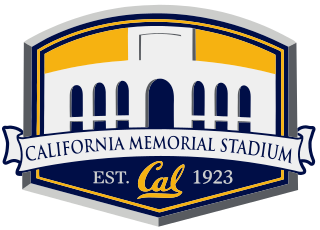
The Hubert H. Humphrey Metrodome was a domed sports stadium located in downtown Minneapolis, Minnesota. It opened in 1982 as a replacement for Metropolitan Stadium, the former home of the National Football League's (NFL) Minnesota Vikings and Major League Baseball's (MLB) Minnesota Twins, and Memorial Stadium, the former home of the Minnesota Golden Gophers football team.
The Minneapolis Marines were an early professional football team that existed from 1905 until 1924. The team was later resurrected from 1929 to 1930 under the Minneapolis Red Jackets name. The Marines were owned locally by Minneapolitans John Dunn and Val Ness, and composed primarily of working-class teenagers. Some of the first games were played at Camden Park, The Parade, and Bottineau Field. Later games were played at larger stadiums such as Nicollet Park and Lexington Park. The Minneapolis Marines are the first Minnesota-based team to join the National Football League, predating the Duluth Eskimos (1923) and Minnesota Vikings (1961).

Williams Arena is an indoor arena located in Minneapolis, Minnesota. It is the home arena for the University of Minnesota's men's and women's basketball teams. It also housed the men's hockey team until 1993, when it moved into its own building, 3M Arena at Mariucci. The building is popularly known as The Barn, and its student section is known as "The Barnyard".

Memorial Stadium, also known as the "Brick House", was an outdoor athletic stadium in the north central United States, located on the campus of the University of Minnesota in Minneapolis. It was the home of the Minnesota Golden Gophers football team for 58 seasons, from 1924 through 1981. Prior to 1924, the Gophers played at Northrop Field.

California Memorial Stadium also known simply and commonly as Memorial Stadium is an outdoor college football stadium on the west coast of the United States, located on the campus of the University of California in Berkeley, California. It is the home field for the California Golden Bears of the Pac-12 Conference.

The Little Brown Jug is a trophy contested between the Michigan Wolverines football team of the University of Michigan and the Minnesota Golden Gophers football team of the University of Minnesota. The Little Brown Jug is an earthenware jug that serves as a trophy awarded to the winner of the game. It is one of the oldest and most played rivalries in American college football, dating to 1892. The Little Brown Jug is the most regularly exchanged rivalry trophy in college football, the oldest trophy game in FBS college football, and the second oldest rivalry trophy overall, next to the 1899 Territorial Cup, contested between Arizona and Arizona State.

Huntington Bank Stadium is an outdoor stadium located on the campus of the University of Minnesota in Minneapolis, Minnesota, United States. The stadium opened in 2009, after three years of construction. It is the home field of the Minnesota Golden Gophers of the Big Ten Conference.

Jack Trice Stadium is a stadium located in Ames, Iowa, United States. Primarily used for college football, it is the home field of the Iowa State Cyclones. It is named in honor of Jack Trice, Iowa State's first African American athlete, who died of injuries sustained during a 1923 game against Minnesota. The stadium opened on September 20, 1975, with a 17–12 win over Air Force.

Ferry Field is a multi-purpose stadium in Ann Arbor, Michigan. It opened in 1906 and was home to the Michigan Wolverines football team prior to the opening of Michigan Stadium in 1927. It had a capacity of 46,000. It is currently used as a tailgating space for football games.

The Minnesota Golden Gophers football team represents the University of Minnesota in college football at the NCAA Division I Football Bowl Subdivision level. Founded in 1882, Minnesota has been a member of the Big Ten Conference since its inception in 1896 as the Western Conference. The Golden Gophers claim seven national championships: 1904, 1934, 1935, 1936, 1940, 1941, and 1960. Since 2009, the Golden Gophers have played all their home games at Huntington Bank Stadium in Minneapolis, Minnesota.

Elizabeth Lyle Robbie Stadium is located in Falcon Heights on the Saint Paul campus of the University of Minnesota. It is primarily used as the home of the Minnesota Golden Gophers women's soccer team. The stadium opened in 1999 and seats 1,000.
Movable seating is a feature of some facilities like stadiums, often known as convertible stadiums, or moduable stadiums. It allows for the movement of parts of the grandstand to allow for a change of the playing surface shape. This allows games that use various shaped playing surfaces such as an oval field, for cricket and/or Australian rules football; or a rectangular field, for football (soccer), rugby league, rugby union, American football, and/or Canadian football; or a diamond field, for baseball; to be played in the same stadium. This is particularly useful in Australia and the United States, where various professional sports with varying field configurations are popular spectator pastimes. The process of conversion from one form to another is time consuming, depending on the stadium it can take from 8 to 80 hours. Many stadiums were built in the United States in the 1960s and 1970s to host both baseball and American football.

The University of Minnesota Marching Band is the marching band of the University of Minnesota and the flagship university band for the state of Minnesota. The Pride of Minnesota serves as an ambassador for the university, representing the school at major events both on and off campus. The band performs before, during, and after all home Golden Gopher football games and bowl games, occasional away games, local parades, numerous pepfests, exhibition performances, as well as a series of indoor concerts toward the end of the regular football season. Members of the band, along with non-member students, also participate in smaller athletic pep bands that perform at other major sporting events, including men's hockey, men's basketball, women's hockey, women's basketball, and women's volleyball.

Cyrus Northrop was an American university president.

The Minnesota–Wisconsin football rivalry is an American college football rivalry between the Minnesota Golden Gophers and Wisconsin Badgers. It is the most-played rivalry in the NCAA Division I Football Bowl Subdivision, with 132 meetings between the two teams. The winner of the game receives Paul Bunyan's Axe, a tradition that started in 1948 after the first trophy, the Slab of Bacon, disappeared after the 1943 game when the Badgers were supposed to turn it over to the Golden Gophers. Minnesota and Wisconsin first played in 1890 and have met every year since, except for 1906. The series is tied 62–62–8 through 2022. Wisconsin took the series lead for the first time after defeating Minnesota 31–0 in the 2017 game; Minnesota had led the overall series since 1902, at times by as many as 20 games.

The Minnesota Golden Gophers men's basketball team represents the University of Minnesota in NCAA Division I college basketball competition. The Golden Gophers competes in the Big Ten Conference and play their home games at the Williams Arena.
The 1899 Minnesota Golden Gophers football team represented the University of Minnesota in the 1899 college football season. The Golden Gophers compiled a 6–3–2 record and outscored all opponents by a combined total of 149 to 79.
The 1923 Minnesota Golden Gophers football team represented the University of Minnesota in the 1923 Big Ten Conference football season. In their second year under head coach William H. Spaulding, the Golden Gophers compiled a 5–1–1 record and outscored their opponents by a combined score of 114 to 60. It was Minnesota's final season playing on Northrop Field.

Olga Mural Field at Schoonover Stadium is a baseball venue located on the campus of Kent State University in Kent, Ohio, United States. It is home to the Kent State Golden Flashes baseball team, a member of the National Collegiate Athletic Association (NCAA) in Division I and the Mid-American Conference East Division. The field opened in 1966 and was previously known as Gene Michael Field from 1990 to 2003. The field was renamed in late 2003 and renovated in 2005 with additional upgrades made from 2006 through 2008 and again in 2013 to 2014. It has a seating capacity of 1,148 people with a Shaw Sports Turf synthetic playing surface.

State Field was the home stadium of the Louisiana State University Tigers football team prior to 1924. The field was built on the old downtown campus of LSU. It was located east of the Pentagon Barracks and at the site of the current Louisiana State Capitol Building. Prior to construction of State Field, football games were played on an area called the parade grounds which was located south of the Pentagon Barracks and west of Hill Memorial Library and George Peabody Hall. The field, known on the campus simply as the "athletic field", was later moved to a site with bleachers that was north of the campus' experimental garden, and next to the old armory building. The field was also used for LSU's baseball and basketball teams.














